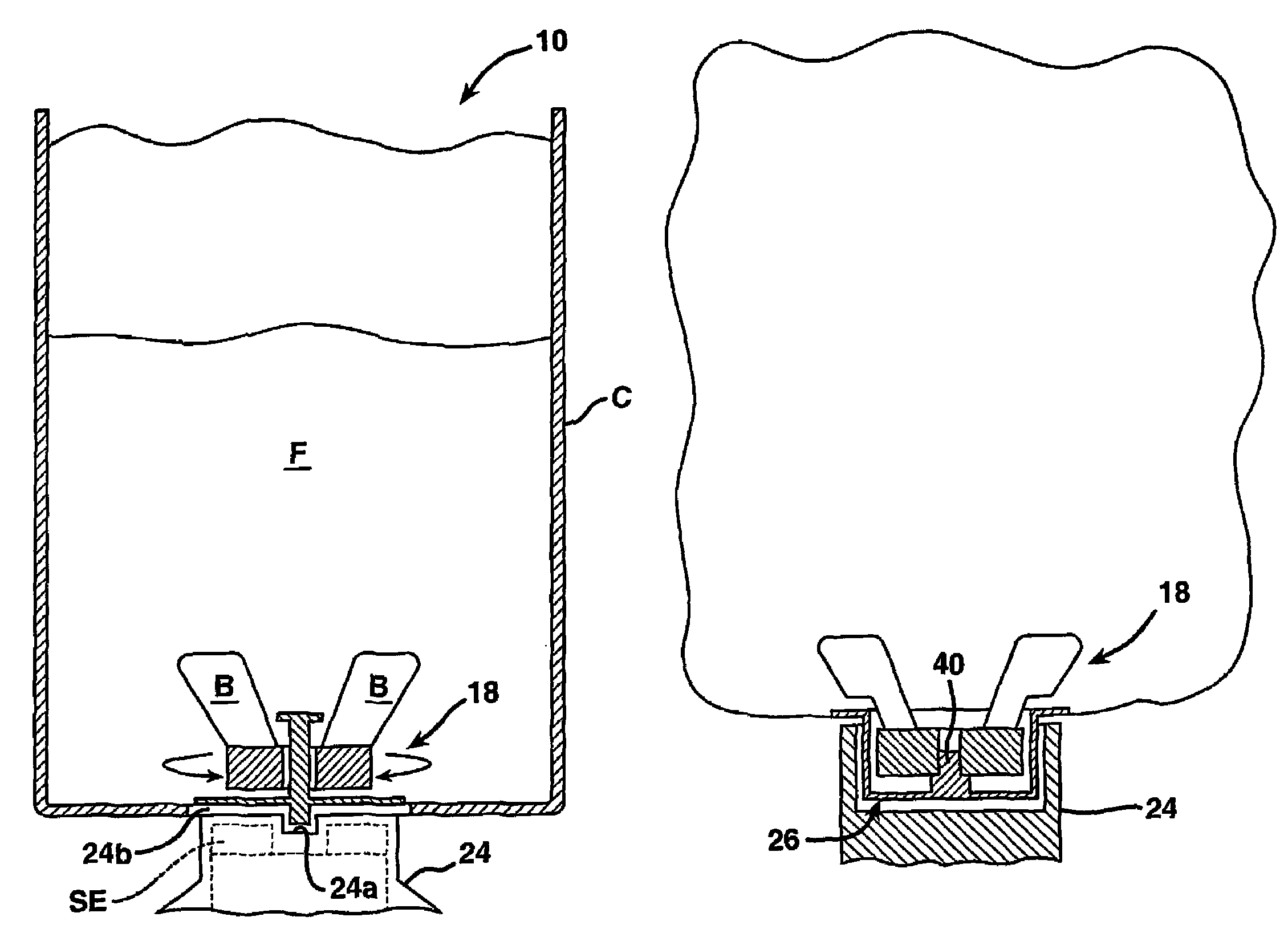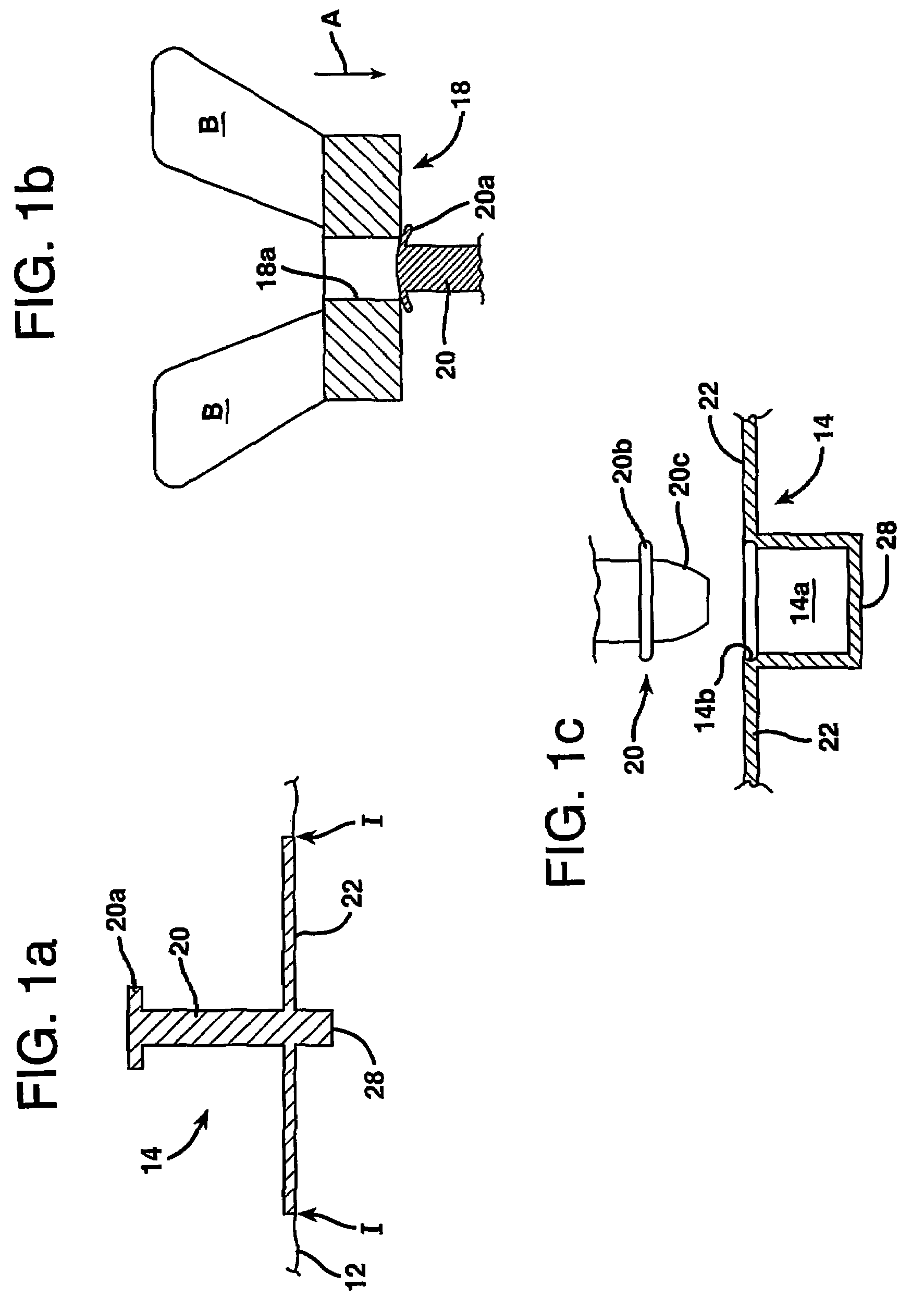Mixing bag or vessel having a receiver for a fluid-agitating element
a technology of fluid agitation and fluid-agitation element, which is applied in the field of vessels, can solve the problems of contamination or leakage during mixing, environmental contamination danger, and degradation of products, and achieve the effect of facilitating the alignment of fluid-agitating elements
- Summary
- Abstract
- Description
- Claims
- Application Information
AI Technical Summary
Benefits of technology
Problems solved by technology
Method used
Image
Examples
Embodiment Construction
[0048]Reference is now made to FIG. 1, which discloses one embodiment of the vessel of the present invention in the form of a bag 10. In this embodiment, the bag 10 includes a body having a flexible or non-rigid portion 12, which is illustrated schematically, and a rigid or stiff portion 14, which is shown in cross-section. However, as outlined further in the description that follows, the use of the many of the present inventive concepts disclosed herein with vessels that are completely rigid is also possible.
[0049]The bag 10 may be hermetically sealed and may have one or more openings or fittings (not shown) for introducing or recovering a fluid. Alternatively, the bag 10 may be unsealed or open-ended. The particular geometry of the bag 10 employed normally depends on the application and is not considered critical to the invention. For example, in the case of a sterile fluid, a hermetically sealed, pre-sterilized bag with an aseptic fitting might be desirable; whereas, in the case ...
PUM
| Property | Measurement | Unit |
|---|---|---|
| magnetic | aaaaa | aaaaa |
| flexible | aaaaa | aaaaa |
| degree of mixing | aaaaa | aaaaa |
Abstract
Description
Claims
Application Information
 Login to View More
Login to View More - R&D
- Intellectual Property
- Life Sciences
- Materials
- Tech Scout
- Unparalleled Data Quality
- Higher Quality Content
- 60% Fewer Hallucinations
Browse by: Latest US Patents, China's latest patents, Technical Efficacy Thesaurus, Application Domain, Technology Topic, Popular Technical Reports.
© 2025 PatSnap. All rights reserved.Legal|Privacy policy|Modern Slavery Act Transparency Statement|Sitemap|About US| Contact US: help@patsnap.com



